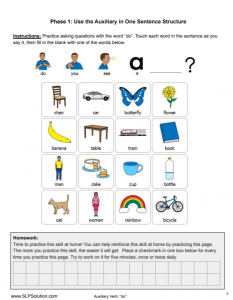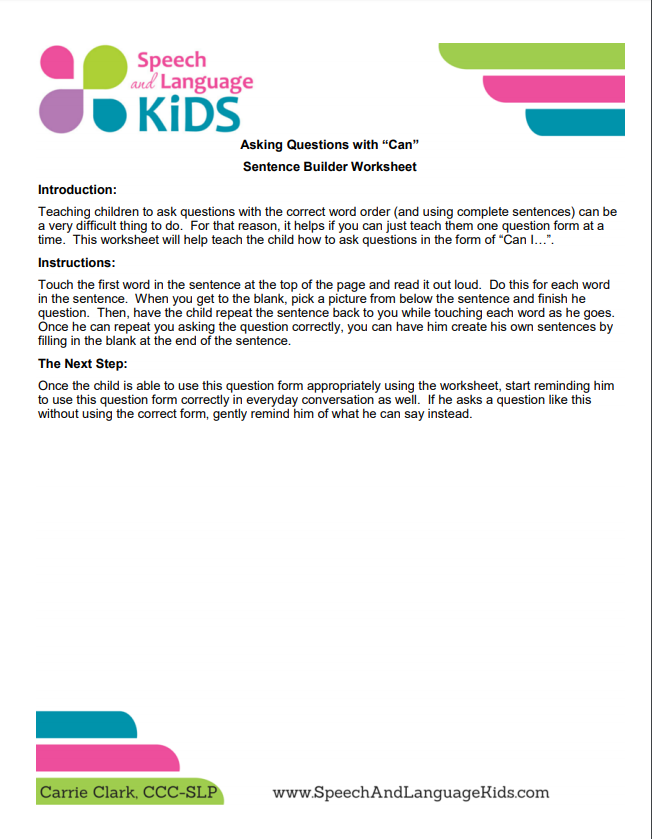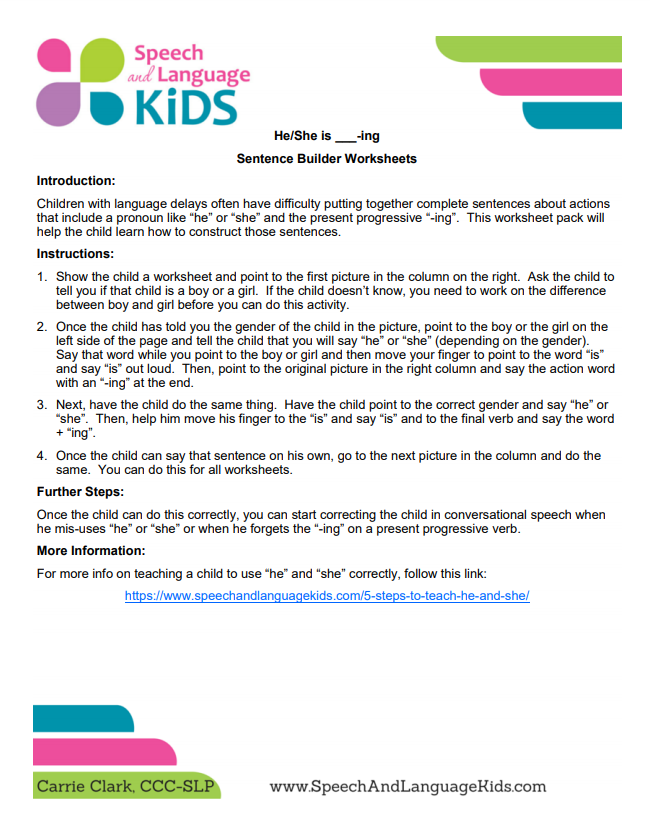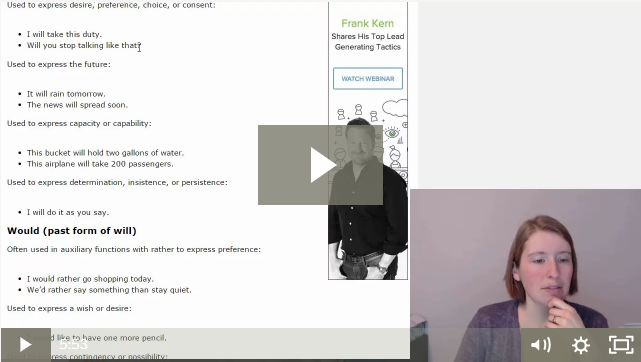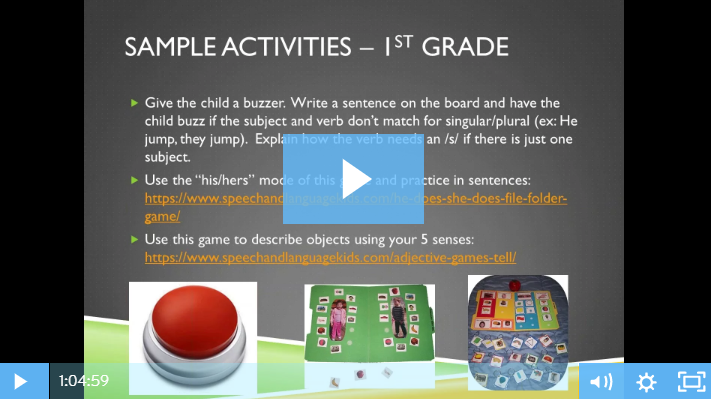Goal: Use Auxiliary Verbs in Conversational Speech
Auxiliary verbs are our helping verbs. They are verbs that are used along side another verb. They are words like “be”, “do”, and “have”. There are also the modal auxiliaries (those that don’t change form) of: can, could, may, might, must, ought to, shall, should, will, would.
For a more in-depth explanation of auxiliary verbs, check out this great guide I love: Grammar Bytes Auxiliary Verbs
Sample Goal:
During a 10-minute observation in the natural setting, Client will correctly use auxiliary verbs (such as “be”, “do”, and “have”) in conversational speech with no more than 3 errors/omissions.
OR
During a 10-minute observation in the natural setting, Client will correctly use modal auxiliary verbs (those that don’t change form, such as: can, could, may, might, must, ought to, shall, should, will, would) in conversational speech with no more than 3 errors/omissions.
Download the No-Prep Therapy Kit:
We have a start-to-finish therapy kit that will give you everything you need to practice this skill in therapy and send home homework. Click the packet below to open it. Then, print it out and place it in the child’s notebook or binder.
We suggest targeting auxiliary verbs one at a time. Here is our current kit. We’ll be adding more at some point, or you can use this framework to work on other auxiliary verbs.
Therapy Phases:
It is important to make sure that you’re working on one type of auxiliary verb at a time. If our children were able to learn the entire auxiliary verb class at once, they would have picked it up naturally from everyday conversation. Instead, our clients often need direct instruction on each type of auxiliary verb in order to fully grasp it.
Take a look at the child’s general conversation skills and pick out a few instances or examples of incorrect auxiliary use that seem to come up often. Target one of those at a time for this process.
- Use the Auxiliary in One Sentence Structure: Client will correctly use the auxiliary verb <INSERT VERB FORM> in a carrier sentence with at least 80% accuracy (such as “do you see a fish?”).
- Expand Out the Use of the Auxiliary: Client will correctly use the auxiliary verb <INSERT VERB FORM> in a variety of sentences with at least 80% accuracy.
- Correct Use of Auxiliary in Structured Conversation: During 10 minutes of conversation in a structured setting (such as the therapy room), Client will correctly use the auxiliary verb <INSERT VERB FORM> with fewer than 3 omissions or errors.
- Carry-Over/Generalization of Auxiliary to All Settings: During a 10-minute observation in the natural setting, Client will correctly use the auxiliary verb <INSERT VERB FORM> in conversational speech with no more than 3 errors/omissions.
What’s Next?
- Once the client has mastered one particular auxiliary verb form in conversation, you can go back and teach another auxiliary verb form. Remember to keep providing reminders and cues for the previous auxiliary verb form(s) during conversation as needed.
Supplemental Materials
Here are some other resources that may help you when working on this skill:
Asking Questions with “Can”: Sentence Builder
Simple worksheet to help children ask the question “Can I have…” with proper grammar and correct word order.
He/She is ___-ing Sentence Builder Worksheets
Three simple worksheets to help a child build a grammatically correct sentence of the following structure: he/she is ___-ing. This is great for children who are working on the pronouns he/she, the word “is”, and the present progressive ending “-ing”.
Training Videos:
Need some extra help on treating this skill? Check out these related training videos:
How and When to Work on Auxiliary Verbs (Click the Video to Play)

